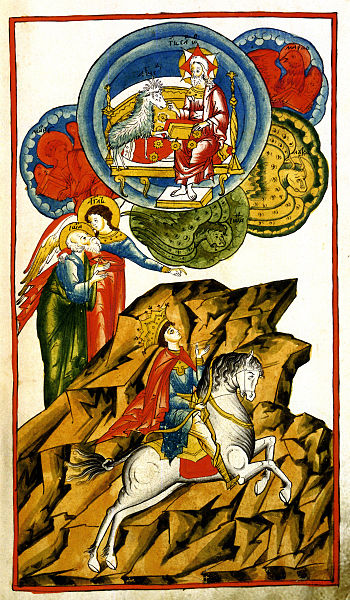 To go along with a study in the Book of Revelation, I’ve come up with a pre-test / quiz. (Remember those in school?)
To go along with a study in the Book of Revelation, I’ve come up with a pre-test / quiz. (Remember those in school?)
So here goes. Have fun with it (answer key at the end)…
7 Questions About the Book of Revelation:
1. The interpretative approach to the Book of Revelation that sees a spiritual meaning behind a good portion of the book’s imagery is called:
(a) The Futurist method.
(b) The Historical method.
(c) The Symbolic method.
(d) The Preterist method.
(e) I don’t have a clue!
2. In chapter 7, the first mention of the “144,000” takes place. This group has a seal on their foreheads. Who are they?
(a) Symbolic of the entirety of the redeemed Jewish people for “all Israel will be saved.” (Romans 11:23, 26)
(b) Unbelieving Jews who were soon to turn to Christ.
(c) Watchtower Society members that will be saved.
(d) Evangelists sent out during the Tribulation to reach the Jewish people.
(e) None of the above.
3. What is the identity of the witnesses described in Revelation 11:3?
(a) Moses and Elijah.
(b) Peter, Paul and Mary.
(c) Samuel and Enoch.
(d) Abraham and King David.
(e) None of the above.
4. How many lampstands, elders, trumpets, living creatures, seals, witnesses and tribes are there in the book?
(a) 7, 12, 7 4, 7, 2 and 12.
(b) 7, 7, 7, 7, 7, 2 and 7.
(c) 12, 24, 7, 4, 7, 7 and 12.
(d) 7, 24, 7, 4, 7, 2 and 24.
(e) None of the above.
5. The Holy City, Jerusalem, coming down out of heaven is described as having twelve gates and twelve foundation stones with names written on each. (Revelation 21) Whose names are they?
(a) The apostles and the prophets.
(b) The twelve tribes of Israel and the prophets.
(c) The apostles and the elders.
(d) The apostles and the twelve tribes of Israel.
(e) None of the above.
6. The four horsemen of the apocalypse ride forth in Revelation 6:1-8. What colors are their horses and what does each represent?
(a) White, pale, black and red ~ conquest, war, famine and death.
(b) White, black, pale and red ~ conquest, war, famine and death.
(c) Pale, black, red and white ~ death, famine, war and conquest.
(d) Pale, black, red and white ~ death, conquest, war and famine.
(e) None of the above.
7. The central figure / outstanding personality of the Book of Revelation is:
(a) Antichrist. (Revelation 13:1-8)
(b) The Harlot. (Revelation 17:1-7)
(c) The false prophet. (Revelation 13:11-17)
(d) Christ the Lamb. (Revelation 5:6)
(e) God the Father. (Revelation 4:1-3)
ANSWERS:
1. (c) Symbolic method / approach: Revelation symbolizes the conflict between good and evil throughout the age.
2. (a) I am going out on a limb on this one. The Futurist approach to interpretation (and most popular method in our day) would choose (d) as its answer. (For more info, click here.)
3. (e) It is hard to pinpoint these witnesses. It could be Enoch and Elijah, the only two who did not experience natural death as we know it. I will make the case that it could be Israel and the Church.
4. (e) 7 lampstands, 24 elders, 7 trumpets, 4 living creatures, 7 seals, 2 witnesses and 12 tribes is the right answer.
5. (d) Reverse order: 12 tribes = gates (Revelation 21:12); 12 apostles = foundation stones. (Revelation 21:14)
6. (c) Reverse order: White-conquest; Red-war; Black-famine; Pale-death.
7. (d) Everything else in the book of Revelation is secondary. Jesus is the star of the show!
(Picture above in the public domain: click here. PD-US)



